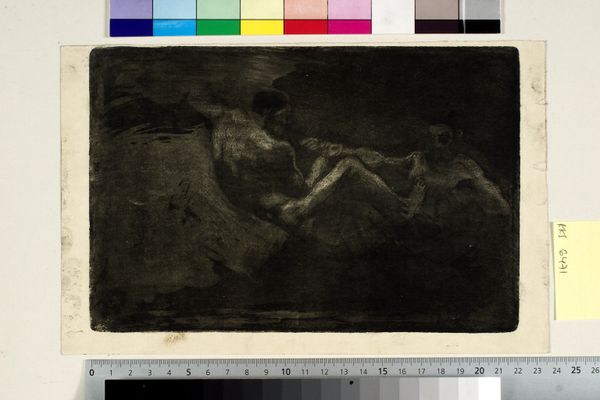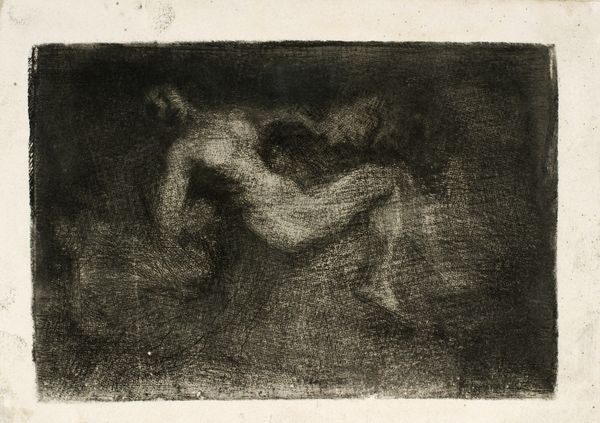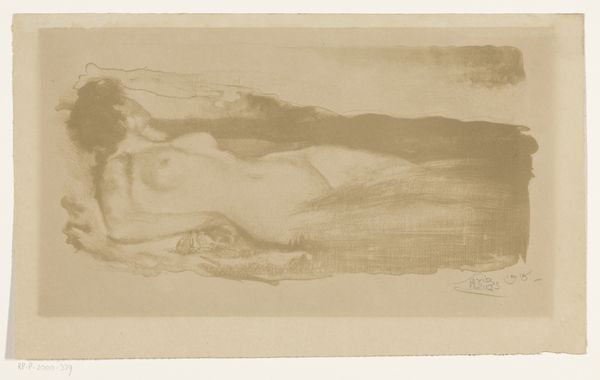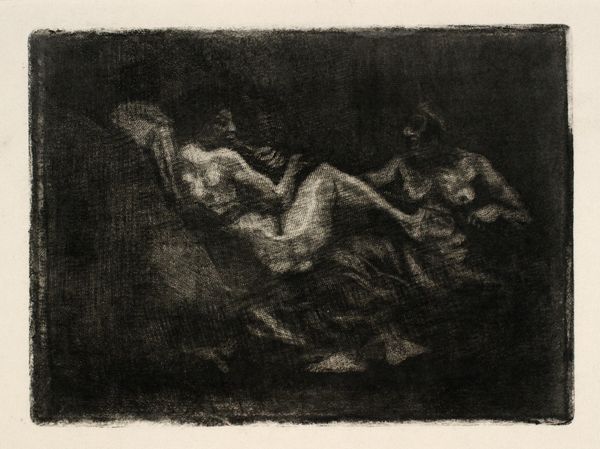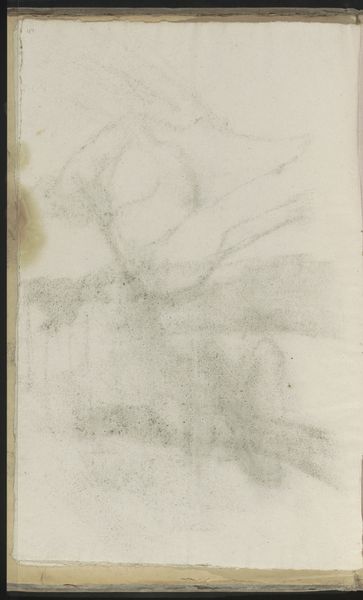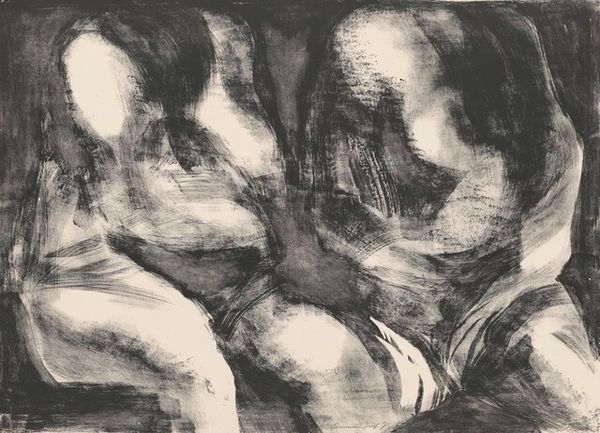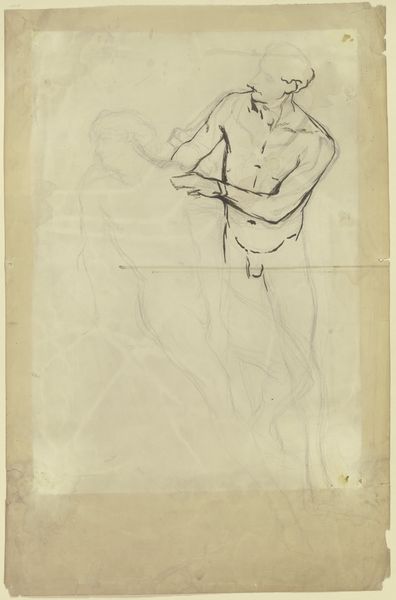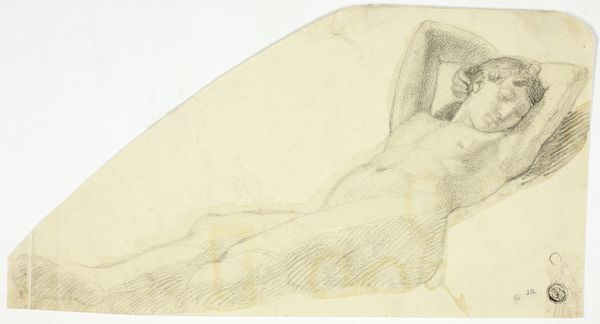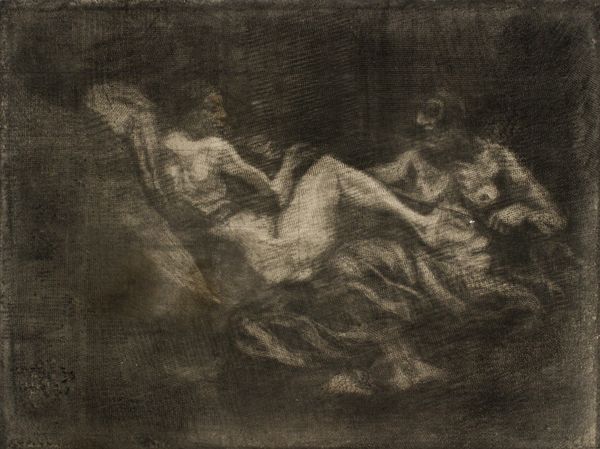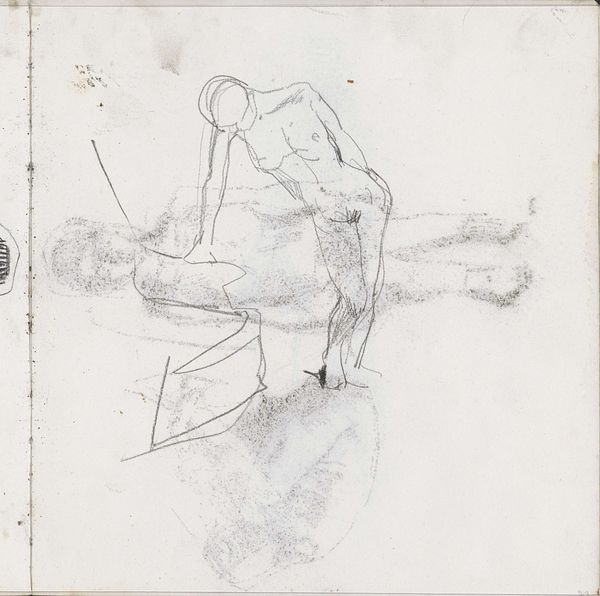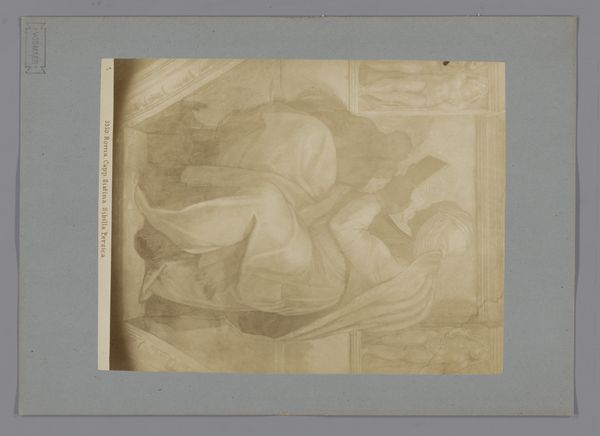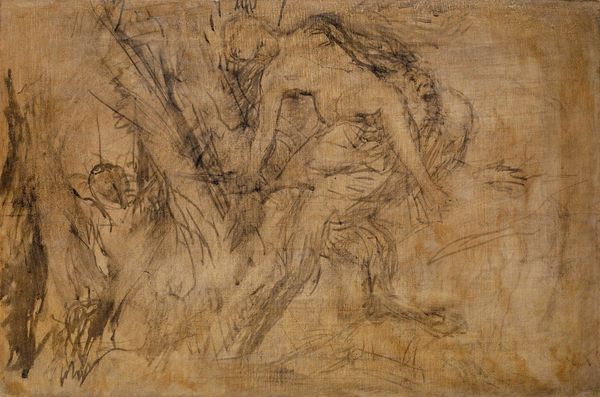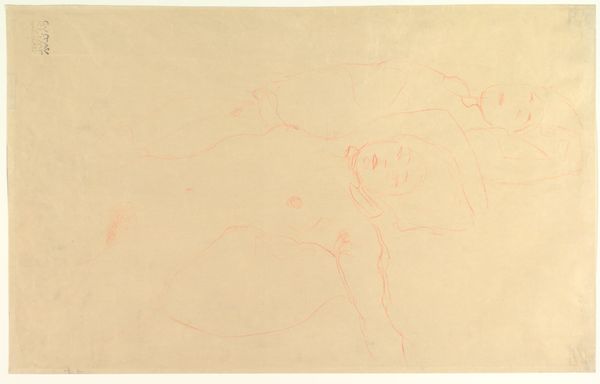
aquatint, print, etching
#
aquatint
# print
#
etching
#
figuration
#
symbolism
#
nude
Dimensions: 115 mm (height) x 158 mm (width) (plademaal)
Curator: Here we have Oluf Hartmann’s 1909 print, "Zephyr bortfører Psyche," housed right here at the SMK, the National Gallery of Denmark. Hartmann employs both etching and aquatint in this symbolic rendition. What strikes you upon viewing it? Editor: Immediately, a sense of ghostly elegance. It's like witnessing a half-remembered dream, all ethereal shades and suggestion. The composition feels weightless, even blurry – like they're not quite of this world. Curator: Hartmann worked extensively with etching and aquatint techniques, enabling tonal subtleties crucial for creating this specific mood. These printmaking processes weren't particularly celebrated at the time as "high art," often considered craft, and prints were consumed very differently than paintings; consider its reproduction and circulation in society. Editor: Yes! It’s the very nature of a print; accessible and reproductive, yet it achieves this extraordinary texture that you could almost reach out and touch. And that nimbus effect! Like Psyche isn't just being carried away but dissolved, body and soul. Is that her agency being erased or enhanced? Curator: A pertinent question. Consider how Hartmann utilized cheaper materials like zinc, instead of traditional copper for some of his plates; such a choice alters the quality and appearance of the final print, adding to its availability and transforming its perceived value, potentially democratizing the artwork and influencing its accessibility. Editor: So it becomes this paradoxical dance between ethereal vision and concrete, reproducible object. Like a whisper caught in a machine. I keep wondering about the source material too - other renderings of Psyche and Zephyr in history. The dialog between originals and replications... Curator: Precisely, how that narrative gets reproduced, interpreted, consumed… and how that is affected by technological and material aspects of printmaking in the early 20th century. Hartmann creates an iteration within a larger socio-economic system. Editor: Thinking about all of that definitely changes my understanding of this fleeting glimpse. It adds gravity. Curator: Absolutely, and a socio-historical texture to that very glimpse. Editor: Well, it certainly takes us away to another place – a layered and complicated one. Curator: It does invite contemplation on both an intimate, ethereal plane, and within a tangible, societal one.
Comments
No comments
Be the first to comment and join the conversation on the ultimate creative platform.
